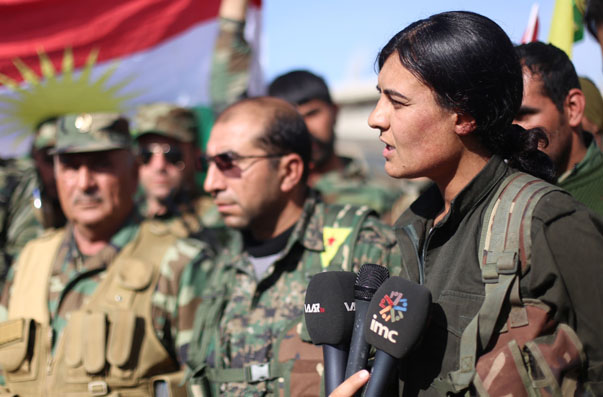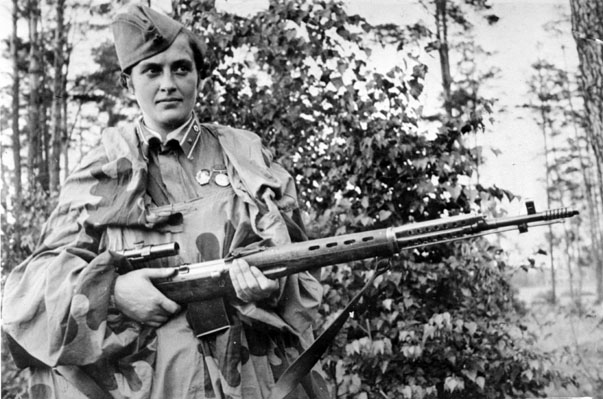Women could serve in infantry and armoured units for the first time from 2016, the defence secretary has said.
Michael Fallon says he is minded to follow the recommendation of a new Government-commissioned report which says close combat roles should be open to women soldiers.
Some serving soldiers are unhappy, but Britain will not be the first country to allow women to fight alongside men on the front line.
National armies
Some 10 per cent of the UK’s total armed forces are women, compared to more than 14 per cent in the US and Australia.
Most countries in the world accept women into their armed forces, although most have various restrictions on what women are allowed to do.
If the UK follows today’s recommendations, it will be part of a small but growing group of countries where women can serve in close combat roles.
More than 20 nations allow women to fight in combat roles, including Australia, Canada, Denmark, Eritrea, Estonia, Finland, France, Germany, Ireland, Israel, Lithuania, the Netherlands, New Zealand, Norway, North Korea, Poland, Romania, Singapore, Spain, Sweden, Switzerland and the US.
A female recruit in Israel’s front-line Caracal battalion
Most of these countries still operate some restrictions. The famous French Foreign Legion is still men-only. And women are still forbidden to serve on submarines in many countries.
It is very unusual for women to be allowed to compete for a place in elite special forces combat units. The only countries we can find where selection is open to men and women are Ireland and Norway. China also claims to have an all-female special forces unit, but the details are obscure.
There have been press reports of female soldiers serving in Britain’s special forces in intelligence and surveillance roles, but the government never answers questions about special operations, so that remains unconfirmed.
A handful of countries in the world have mandatory military service, in various forms, for men and women, including Israel, Eritrea, Bolivia, Mozambique and, from this year, Norway.
The Scandinavian country is the first European state and Nato member to make military service compulsory for both sexes, although the rules do not mean every Norwegian citizen is forced to do national service.
The Norwegian military is unusual in having mixed dormitories for its conscripts and has taken gender equality further than others in allowing men to grow their hair as long as female recruits so as not to discriminate against them.
YPJ commander Hebun Derik briefs journalists near Kobani, Syria (Getty)
Guerilla girls
Apart from national armies, various armed rebel groups have attracted significant numbers of women.
Obviously it is problematic comparing groups that some governments have classified as terrorists with official armed forces, but it remains the case that women members have been involved in fierce fighting for various causes across the world.
Sri Lanka’s Tamil Tigers had all-female battalions and a significant number of the leftist Farc guerrillas in Colombia are believed to be women.
Some analysts think as many as 30 per cent of the Maoist guerrillas who waged war against the government of Nepal in the country’s civil war were women.
More recently, Kurdish female fighters have played a prominent role in fighting the Islamic State group in Iraq and Syria.
Women from the Iraqi Kurdish peshmerga and the leftist Syrian YPJ group – the 10,000-strong Women’s Protection Units – have been filmed and photographed engaging in close combat with Islamists in recent months.
What does history tell us?
Recent research suggests that as many as 1 million women served in the Soviet Army in World War Two, and another 28,000 fought with partisan groups.
How many of those women actually took part in combat remains unknown, though we know that some did.
Heavily-decorated female Red Army veterans include Ukrainian sniper, Lyudmila Pavlichenko (above – picture: Getty), whose 309 confirmed kills make her one of the deadliest shots in military history.
Tank drivers and pilots were among dozens of female veterans of World War Two awarded the Hero of the Soviet Union, the country’s highest honour.
Despite being called up in large numbers when the Soviet Union faced the threat of destruction by Nazi Germany, few women were encouraged to stay in the military after 1945.
Some historians think even more women could have served with the forces of the communist North in the Vietnam war – perhaps 1.5 million – but again, it is unclear how many fought in close combat roles.






